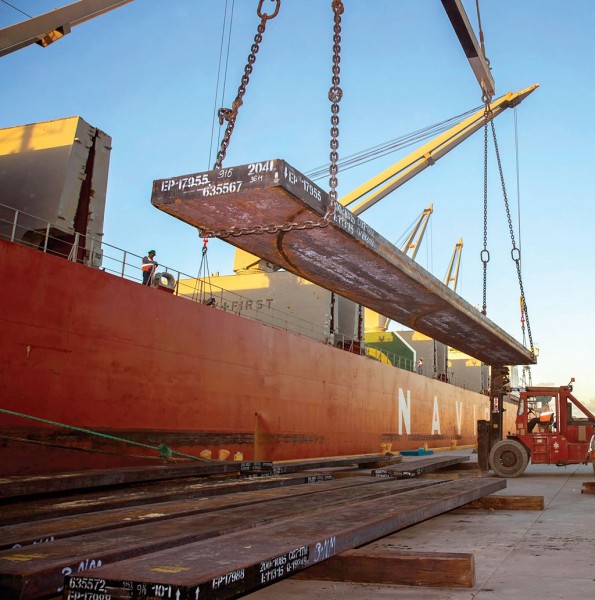Driven by a broad spectrum of energy-related cargos, consumer demand for containerized goods and vehicles, military activity and other stimulative forces, ports along the Texas Gulf Coast are for the most part thriving and are ambitiously advancing a multitude of infrastructure enhancements as they gear up for even greater volumes.
From expanding docks at the Port of Port Arthur to diverse growth at the Port of Brownsville, here is a report on the latest developments at leading Texas ports, starting west of the Louisiana state line, then moving down the Gulf Coast to just north of the U.S.-Mexico border:
At the Port of Port Arthur, expansion of dock facilities is advancing, with a general contractor mobilizing construction in the spring of 600 linear feet of additional wharf space. The dock project, supported by $90 million in voter-approved general obligation bond financing, is to also encompass a second phase, to deliver yet another 1,000 linear feet of berthing at the Southeast Texas port, which has enjoyed enhanced rail connectivity thanks to recent addition of 5,100 feet of further trackage.
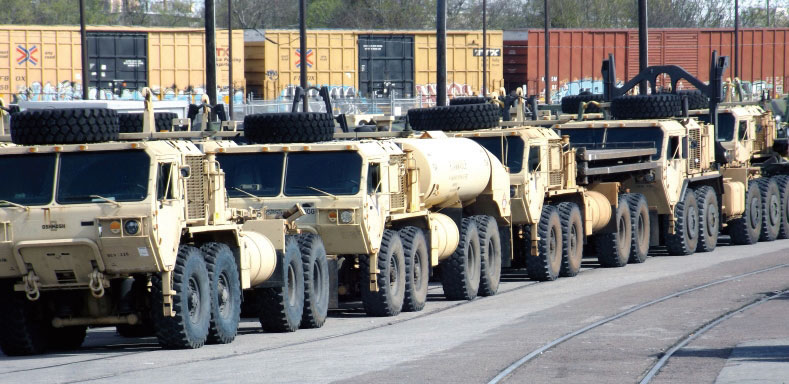
While port officials look to continue to benefit from project cargo arriving for numerous nearby refinery expansion undertakings, forest products remain a staple at the Port of Port Arthur, with dimensional lumber imports from Europe joining such longtime cargos as wood pulp imports from Brazil and Kraft linerboard exports to Europe.
Port of Beaumont
The largest strategic military outload port in the nation and the fifth-largest port in the United States in terms of total tonnage handled, the Port of Beaumont is poised to experience considerable growth over the course of the next five years. The Port of Beaumont’s current $169.2 million capital program features a dozen projects to address infrastructure efficiency gaps, including the rebuild of Dock 2, Dock 3 and Dock 4, as well as rail yard interchange and overpass endeavors.
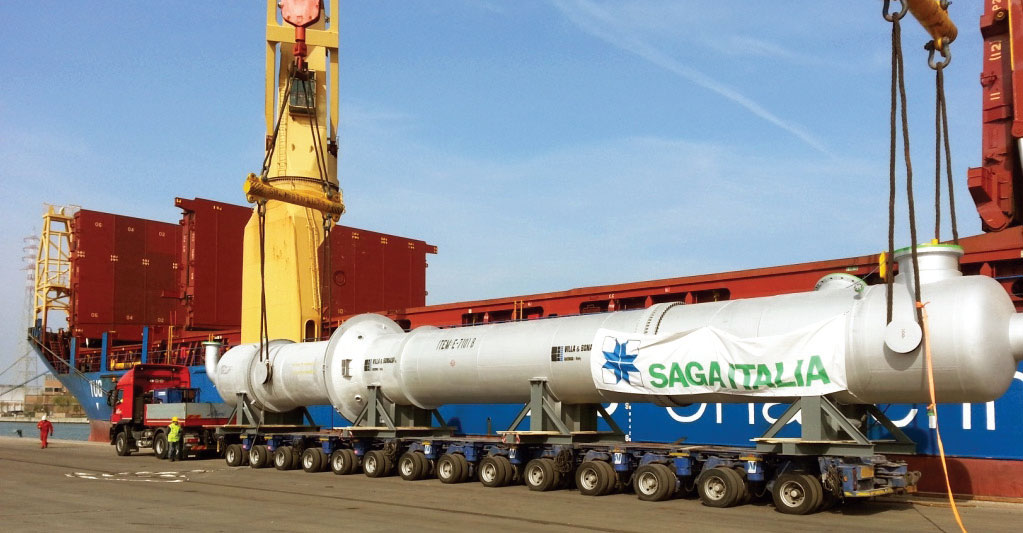
These projects aim to facilitate the recovery and growth of a region that suffered extensive economic losses due to Tropical Storm Harvey late last summer.
Port Houston
The No. 1 U.S. foreign tonnage port, Port Houston had a record-setting 2017, handling 38.3 million total tons of cargo and 2.46 million 20-foot-equivalent container units, while realizing substantial completion of more than $200 million of construction projects last year, with plans for 2018 calling for further key infrastructure improvements.
At Port Houston’s Bayport Container Terminal, completed projects include Container Yard 6 North and Container Yard 6 South, while the port’s venerable Barbours Cut Container Terminal is benefiting from rehabilitation of Wharf 2 and East End Yard improvements, plus three new super-post-Panamax ship-to-shore cranes. Three more such gantries are slated for delivery to Bayport in 2018.
Port Houston’s channel development team continues to work with the U.S. Army Corps of Engineers to advance plans for next-generation improvements to the Houston Ship Channel. The $10 million multiyear mega-study passed the tentatively selected plan milestone and now is moving into more detailed definition. Key study elements focus upon widening and deepening upstream of the Beltway 8 bridge to accommodate larger ships, plus deepening of the turning basin at the Turning Basin Terminal.
Port of Galveston
Although, largely due to significant declines in grain exports and bulk fertilizer imports, the Port of Galveston saw an overall drop in cargo volume in 2017, bright spots continue to be wind energy components and vehicles.
Thanks to a public-private partnership involving short line and terminal railway operator Galveston Railroad LP and Class I railroad BNSF Railway Co., the Port of Galveston is able to move wind turbines and towers and other overdimensional cargo to inland destinations via a rail car storage track system that facilitates on-port formation of unit trains. Imported components transported by way of the Port of Galveston go to numerous wind farm projects in four states – Texas, New Mexico, Colorado and Oklahoma.
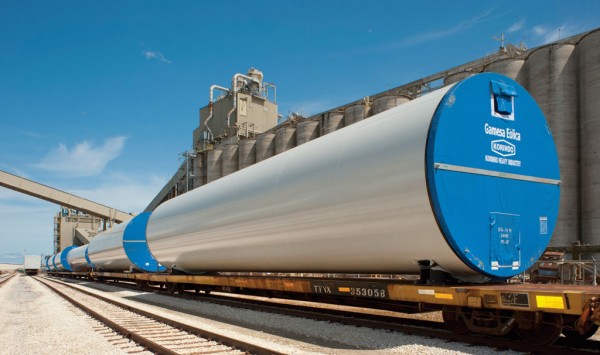
Port Freeport
Assertively moving toward a deeper ship channel, enhancing rail and highway links, expanding terminal and industrial park development and augmenting international collaboration, Port Freeport is poised to continue growth that has been largely propelled by the region’s dynamic petrochemical industry.
Deepening of Port Freeport’s harbor channel to 56 feet at mean lower low water from its present 46 feet MLLW for approximately 8 miles is entering engineering and design phases, with construction anticipated to begin by late 2019 or early 2020, with an eye toward completion about five years later. The improved channel should facilitate safer movement of burgeoning oil exports via mega-tankers while welcoming a full spectrum of larger vessels.
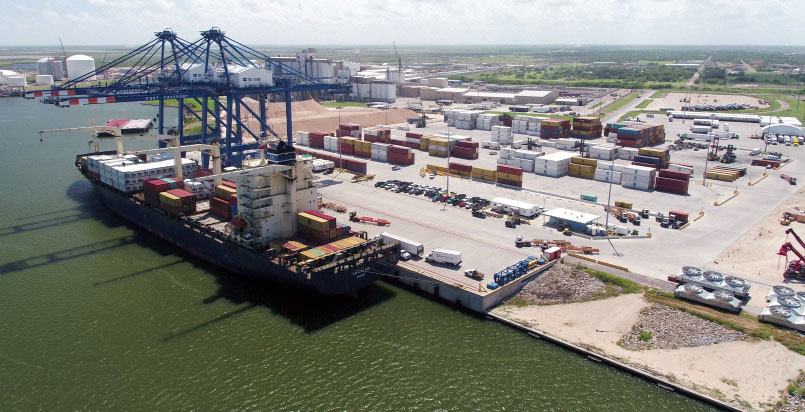
Port Corpus Christi
At Port Corpus Christi, where Sean Strawbridge has been elevated to chief executive officer as part of plans to succeed the port’s longtime executive director, John LaRue, an aggressive schedule calls for deepening the ship channel to 54 feet MLLW by 2021. That’s shortly after projected completion of a $900 million joint undertaking to replace the half-century-old bridge over the port’s Inner Harbor entrance with a span with a 205-foot air draft – tall enough to accommodate supersized tankers.
A deeper, wider channel and taller bridge are keys to Port Corpus Christi building upon its distinction as the No. 1 U.S. port for crude oil exports and drawing closer to its aspiration to be The Energy Port of the World.
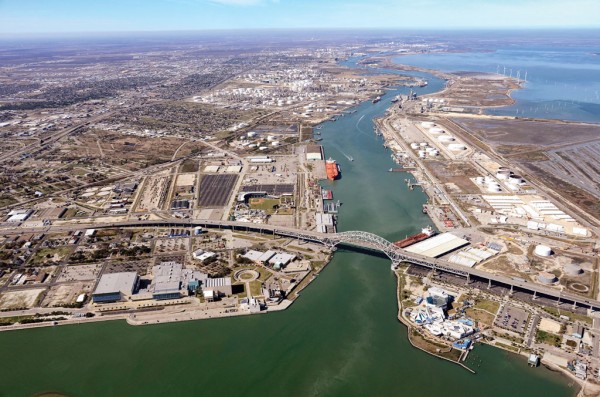
Port of Brownsville
The Lone Star State’s southernmost port, the Port of Brownsville is looking forward to a transformational year as “the port that works,” building upon record cargo tonnage of 10.3 million short tons and best-ever operating revenue of nearly $24 million achieved in 2017. Dry bulk, liquid bulk and breakbulk volumes are all reported on the rise.
Significant new customers at the Port of Brownsville include Sugaright, which imports raw sugar in bulk and exports bagged product, as well as importer Texan Cement, while the port has been receiving pipe and related materials for the $1.5 billion Valley Crossing Pipeline project and has been chosen as the site for construction by Keppel AmFELS of at least two Jones Act containerships to be deployed by Pasha Hawaii. Also, multiple LNG projects are on the horizon.
